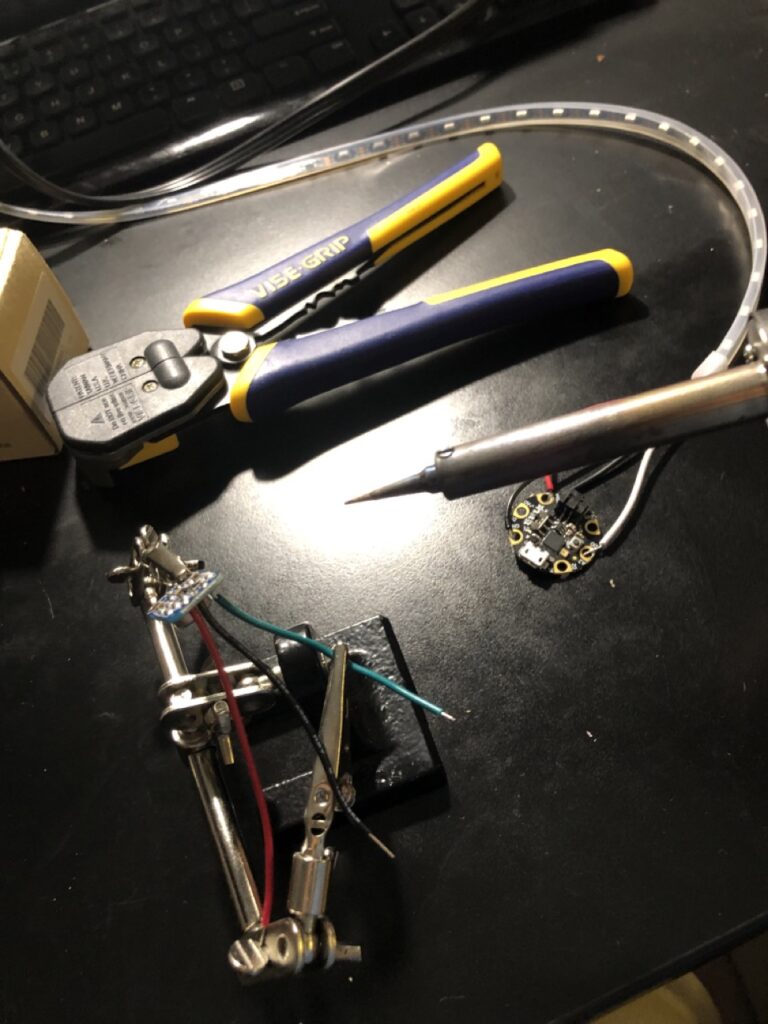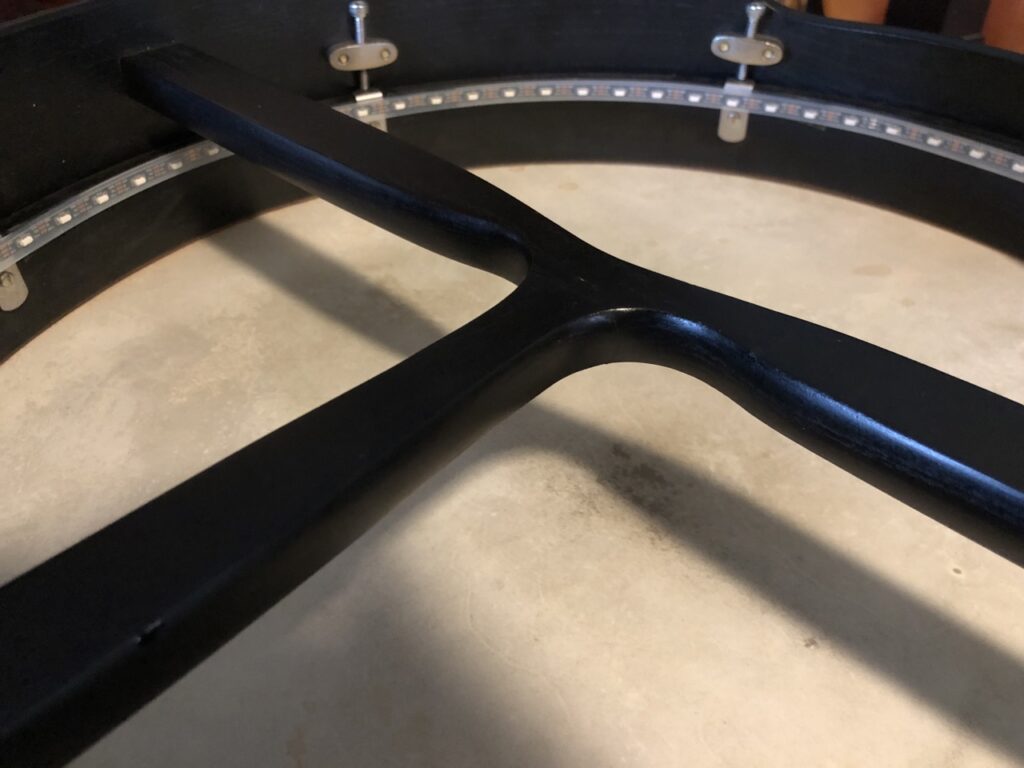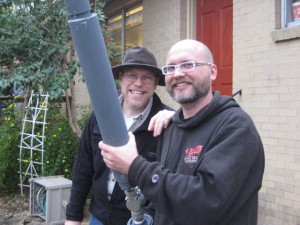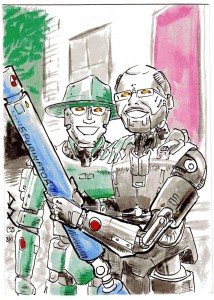John Dewey suggested that many of the arts are crystallizations of ordinary human experience. Fiction is the crystallization of telling people about what happened; visual arts are the crystallization of looking around and seeing; music is the crystallization of listening. Games, I claim, are the crystallization of practicality…Fixing a broken car engine, figuring out a math proof, managing a corporation, even getting into a bar fight—each can have its own particular interest and beauty. These include the satisfaction of finding an elegant solution to an administrative problem, of dodging perfectly around an unexpected obstacle. These experiences are wonderful—but in the wild, they are far too rare. Games can concentrate those experiences. When we design games, we can sculpt the shape of the activity to make beautiful action more likely. And games can intensify and refine those aesthetic qualities, just as a painting can intensify and refine the aesthetic qualities we find in the natural sights and sounds of the world.
-Thi Nguyen (Games: Agency as Art)
Category Archives: Art
The Nuclear Bodhran
While playing with The Happy Out at the San Antonio Highland Games recently, we were a bit vexed to be utterly drowned out during one of our lilting acapella tunes by the band at the next stage. The musical interlopers in question turned out to be Celtica, a group known not only for their Scandinavian-metal tinged Celtic rock, but also for their fire-belching bagpipes. While we have no aspirations to match them in volume, we were impressed with their visual flair, and decided to see what we could do to step up our own, ideally in ways that would not cause the fire marshal to raise a concerned eyebrow.
On my return home, I immediately launched into a couple hours of feverish research, followed by placing an order from Adafruit, one of my favorite electronics supply houses. A few days later, the shipment arrived, followed closely by some tinkering, prototyping, tea-drinking, assembly, thinking, coding, cursing, disassembly, soldering, and reassembly. Eventually, the smoke billowing from the chimney of my workshop abated and I emerged with v1.0 of The Nuclear Bodhran[^1]!
I was fortunate in this effort that Adafruit had published an article on their site on making the drums in a trap set sound-reactive. I used their parts list, circuit diagram, and code as a starting point for my efforts. However, I made several tweaks to their design that better suited it to my needs:
- I used a Neopixel strip that emits light to the side, rather than outwards, which allows the LEDs to light the drumhead nicely without obstructing the sound or getting in my way while playing.
- I added the ability to switch through several different display modes:
- All of the LEDs reactively light up green (standard Irish pub gig mode)
- All of the LEDs reactively light up in a rainbow pattern (pride parade gig mode)
- Irish Flag mode, where the drum is split into three regions that are illuminated in orange, green, and white
- I used a capacitative switch library to allow me to touch the microcontroller on one of the electrical contacts to change through the modes.
- I added code to use the built-in LED on the Gemma M0 to display a color to indicate the current mode.
- I omitted the power switch, as the Gemma M0 has one onboard.



Project Reflections
- I was really pleased with how quickly the lights are able to respond to the sound, tracking very accurately even the super-quick beats one gets when using both ends of the tipper to strike the drum head.
- The brightness is good — not enough to show well outside, but certainly sufficient for an indoor setting without huge stage lighting, and perfect for the dim corners to which we are most often relegated.
- This was my first battery-powered electronics project, and I was pleasantly surprised at how easy the Gemma controller makes it to do: the USB connection powers it when plugged into a computer for programming, and when I plug a LiPo battery into the appropriate terminal, it boots up and starts running the last code I’d loaded into it in less than a second.
I’m quite happy with how this first version turned out. For future versions, I might explore whether there are brighter light strips available, or whether using strips with more LEDs per meter would allow the lighting effects to be seen in a broader range of environments. I’ve also considered changing out the Gemma M0 for a microcontroller that supports wifi and bluetooth so that we could sync up lighting effects on multiple instruments or even have the audience send texts from their phones to change the lighting effects. (There is no end to my nerdiness.)
I’ll be trotting this out for the first time at The Cottage this weekend; looking forward to seeing how it’s received!
Resources to Build Your Own
- The original project at Adafruit: https://learn.adafruit.com/gemma-powered-neopixel-led-sound-reactive-drums/overview
- My code: https://gist.github.com/SeanMcTex/3aa83ca059b0f9b98bd299960e1cc5df
[^1]: Not actually nuclear. But actually a bodhran.
A Bit of DALL-E
I’ve recently gotten access to DALL-E, an artificial intelligence program to which you can provide prompts and it outputs images based on those prompts. It’s an incredible piece of tech, and often hilarious. I just gave it the prompt “Jesus as a superhero” and got this back:

BTW: I know Jesus wasn’t a white dude. This demonstrates one of the perils of inaccurate training sets for machine learning models.
“Astronauts kung fu fighting” is also pretty fun:

Five Stories, Four Walls, One of them Broken
I love a good story. I especially love a good story when it’s really well told. But I get the most excited when I encounter a good story that’s told well in a way that’s new to me.
On a recent family trip, we stopped to visit Meow Wolf in Santa Fe. I had lobbied to make it a point of call for us on the strength of a scant few facts: it had enlisted dozens of artists to create a fun house for adults, and it had $3.5 million of George RR Martin’s “Game of Thrones” fortune behind it. The nutritious vegetables of art combined with the delicious cheese sauce of lasers, arduinos, and black lights? Yes, please.
What I didn’t realize until we arrived and began exploring was that there’s a coherent narrative that underlies all of the mad, divergent installations that fill the House of Eternal Return’s 20,000 square feet. The story of an Orwellian totalitarian society, a family of experimenters, and an immortal hamster is told by means of pictures, a clothes dryer you crawl through, interactive exhibits, diaries and notebooks, and newspaper articles. Exploring the vast, dizzying space while stumbling across clues as to what happened to this family and where it lead them was one of the most engaging narrative experiences I’ve had in a long time. (Caveat: when at peak capacity, it becomes tough to fend off the jostling crowds enough to dig into the storyline. The “Blue Man Group has a rap battle with Burning Man while Tim Burton judges” vibe is still terrific, though.)
While not everyone has a taste for this sort of creative weirdness, I love it when storytellers try new things. If you’re a fan of this sort of thing, here for you are a few of my other favorite stories told in unusual ways:
The Skin of Our Teeth
Thornton Wilder’s “The Skin of our Teeth” was the first play I remember seeing where the characters of the play address the audience directly, and the world of the story gets thoroughly mixed with the world of the play’s production. It blends the silly, serious, and sublime irresistibly. When I saw it for the first time in High School, it was one of the most emotionally affecting experiences I’d had up to then, even 40 years after it won its Pulitzer Prize. It gets produced from time to time on both amateur and professional stages; keep your eyes open for it!
Device 6
“Device 6” is a narrative game that runs on iOS devices. While largely prose based and story driven, it does weird and wonderful things with the text that wouldn’t be possible in a more traditional medium: turning words of the story itself into a map of the protagonist’s travels, blending beautifully-produced audio into the game’s puzzles, and having the soundtrack’s composer make an appearance in-game. It’s well worth the purchase if only to see the fascinating narrative devices that Simogo uses to tell its tale; the fact that it’s actually a good story is lagniappe.
S (Ship of Theseus)
Doug Dorset and J.J. Abrams, the same fellow who brought us “Lost” and some of the recent “Star Trek” and “Star Wars” films, also penned “S” (also known as “Ship of Theseus”), a terrifically interesting experiment in narrative in novel form. There are several parallel stories going on as you read through S: one is the text of the book itself. Another is a dialogue in the margins, purportedly left by readers of this copy of the book who wrote back to forth to each other in marginalia. Additional depth comes through other “real world” items — postcards, newspaper articles, ticket stubs — stuck in the book. Reading through all of these things and piecing together how the disparate parts fit together provides a wonderful sense of being “in on it,” of having stumbled across a rich, private world by accident.
Majestic
Back in 2001, when I was working for Electronic Arts, that company launched Neil Young’s “Majestic,” a groundbreaking Alternate Reality Game. At its heart, Majestic was a conspiracy-theory riddled science fiction thriller. The storyline itself wasn’t particularly novel, but the way it was played was different than anything that preceded it. Rather than launching a game on the computer, players interacted with the narrative using all of the tools of real life: they received emails and faxes from characters in the game, got chat messages, scoured real websites for clues, and fielded phone calls and voice mails that advanced the plot. This blurring of the lines between real life and the game was fascinating and made for a really compelling narrative experience, and increased my disappointment when the game was cancelled around a year after its launch.
Each of these experiences tried something new and made their stories richer. They are some of my very favorite storytelling experiences as a result. What are some of your favorites that have tried new things and pushed the boundaries of the form?
Grafik Intervention
Last night, Kathy and I stopped by a neighborhood in downtown San Marcos to see this:
The project was done by a typography class at Texas State University, and included this historical home, a neighborhood church, and an old jail. Students had researched the history of each of the structures, and then devised projected sequences that told about the history of and future plans for each structure. It was a surprisingly engaging way to learn a bit more about our fair city.
Read more details about the project here.
Humanities and Technology
Yesterday the kids were off from school for teacher conferences. We started off with 10 young people under the roof, thanks to sleepovers, with the remainder of the day continuing in the same busy, wild vein.
And then, on the way to pick up a collection of teenagers from the river, I heard on NPR that Steve Jobs had died.
I had never met the man, and was surprised to realize how sad the news of his death made me. As I’ve mulled over various tributes and retrospectives, I’ve come to a better understanding of why that is.
The products and technology he brought about have, of course, been a large part of my personal and professional life. His commitment to excellence has been inspirational, and his drive to achieve great things stirring. His charisma and capability as a leader were instructive.
But the most interesting, distinctive thing about his career and success is this: its humanism. While the rest of the industry has often been content to make computers do what computers do better, Mr. Jobs had an unwavering focus on using technology to help people do people things.
What do people do? We communicate. The iPhone, Facetime, and iChat spring from this desire. We make and enjoy art. iMovie, Garage Band, iPhoto, and the iPod all have their roots there. We enjoy relationships with other people. Thus, integration with all sorts of social media, facial recognition technologies, etc. We tell stories. Pixar does some of the most brilliant storytelling of our generation. (“Up” made me misty-eyed in record time, and “The Incredibles” remains one of my favorite films ever.)
For many technologists, the instinctive thing to do is to span the gap between people and technology by having the explorers build a precarious rope bridge which will allow the tenacious to, with a good deal of effort, make it to the other side. Steve’s unique genius was that, having made it across, he then turned his fellow explorers right back around and had them build a sturdy, capacious, beautiful bridge for the rest of the world to follow the explorers.
Indeed, he made technology “for the rest of us” — not so that we could have better gadgets, but so that we could ultimately have better, richer, more fully human lives. Thanks, Steve.
Marvelous Birthday Present
As all you regular readers of this blog already know, my friend Jason Young and I are rather prone to building things that break other things. For my 40th birthday, we built a potato cannon and used it to shoot down my birthday piñata. For my 41st birthday, Jason used this photo from the 40th:
To commission this original artwork for the 41st:
Utterly freaking awesome, I think you’ll agree.
The best part? As the guy who did the drawing detailed in his blog post, it was not until Jason actually ordered it that he realized the artist, who he had discovered out in the untamed wilds of the Internet, lives two doors down the street from him.
Thanks Jason! (And Ben the artist!) This is now one of my most prized possessions. Great stuff.
The Need for Beauty
I don’t often post mere links to other people’s essays here, but The Need for Beauty mirrors some of my own thoughts and challenges as a parent and a creative person so nicely that I couldn’t pass it up without pointing more folks towards it. Well worth a read, especially for people who fall into both of those camps.
Wire Tree Prototype
Several months ago I was out in Wimberley, visiting my favorite hill country art gallery, and stumbled upon a huge, lovely tree sculpture made of wire. I was so impressed with the piece that I immediately decided to learn to make something similar myself. So yesterday, I picked up a dollar worth of florist’s wire and found this article. Thus armed, I embarked on my first attempt to prove Joyce Kilmer wrong.
An hour of fooling around with wire and my leatherman in the front yard yielded this:
Altogether, a credible first attempt, I think. A few things I learned along the way:
- Green wire makes everything look like a cactus.
- While tree roots are, in fact, as extensive as the branch systems, they’re usually below ground. Thus, using only 1/3 of the length for roots makes more sense than 1/2.
- Modeling the upper branches is hard once the lower ones are done. Next time I’ll experiment with working from the top down instead of the bottom up.
- Leatherman tools are awesome.
Mistletoe Furlough Redux
We’ve made it home safely from our grand Christmas roadtrip, and are enjoying the comfort of sleeping in our own beds once more. I don’t have the time or skill to do the trip justice, but here are a few of the highlights that stick out in my memory:
- A wonderful extended time of visiting with the Adams family. Though we unfortunately never were able to visit them in Uganda while they were doing teaching and mission work there, having a full week with them was a good bit of make-up. It was terrific to get to enjoy long talks, trips to the park, ice cream, Carcassonne games, etc. without the time pressure that often characterizes our visits with family and friends.
- Visiting the Frontier Culture Museum. This historical park recreates farms from the homelands of the various people groups that settled in the area by transporting buildings piece-by-piece from their land of origin and training guides to explain life at that time in character. It’s a fascinating place with sound educational value.
- A mini college reunion. My old college friends Jonathan and Nadja were kind enough to put us up for two nights in Lancaster, Pennsylvania. To my surprise, they also coordinated with Steve and Debbie and Bob and Sonia to bring together a wonderful dinner of old college chums. It had been a decade since I’d seen most of these folks, and I was struck with how much I still enjoy their company and the richness of their friendship.
- Laughing about the “5 kid tour”. Three of the families we visited with over the course of our trip had 5 children in their family. For the first time ever, I felt like a bit of a procreative underachiever!
- Going snow tubing at Ski Roundtop. We had hoped to do a day of snowboarding at some point on the trip, but weather and schedules conspired to make that an impossibility. Two hours sliding down a snow-packed hill on tubes was a decent substitute, good enough that Liam declared it his favorite part of the trip.
- Visiting the museums and zoo in Washington DC. I was particularly thrilled to see Spaceship One, as well as a giant piece by Andy Goldsworthy at the National Gallery. (If you haven’t seen Rivers and Tides, the documentary on Andy’s work, it’s well worth renting.) We also got to see the Giant Pandas at the zoo feeding and quite enjoyed the bird displays.
- Staying with Rob and Kim and Glenn and Michelle in Nashville. Glenn and Rob were among my closest college friends, and it was an absolute pleasure to get to catch up with each of them and their families. I only wish we had been able to linger — the visits both seemed far too brief!
To my surprise, the kids did really well with the long car rides, which topped out at about 14 hours in a single day. They were, however, pretty gleeful to see the end of their time trapped in the back of the vehicle, rolling around on the ground and squealing with glee when we returned home at last.
Thanks to all who contributed to the success of the trip. We enjoyed it a great deal, and are very glad to be home safely!




